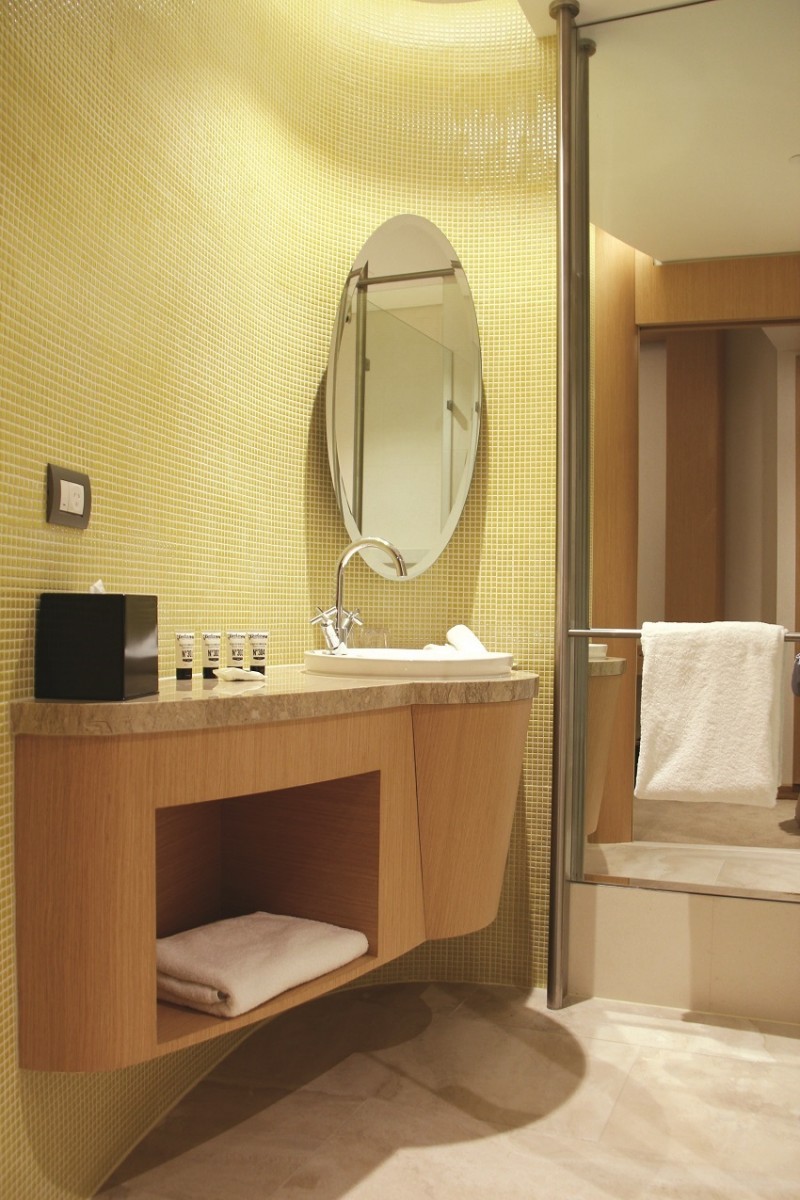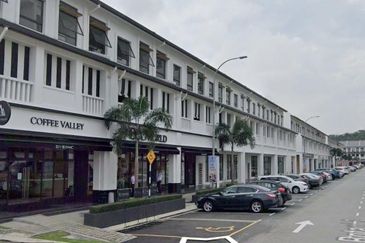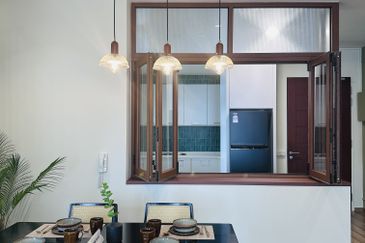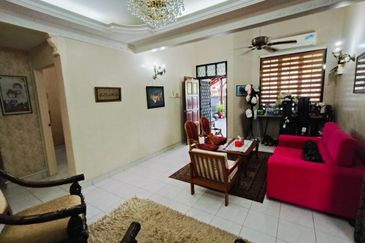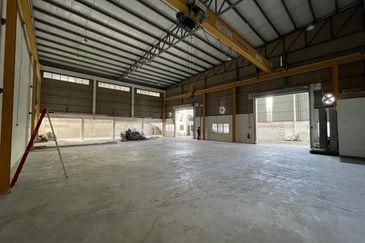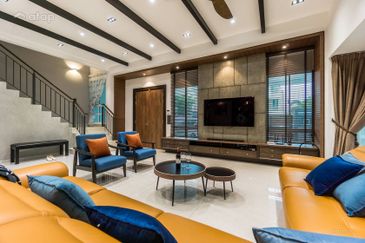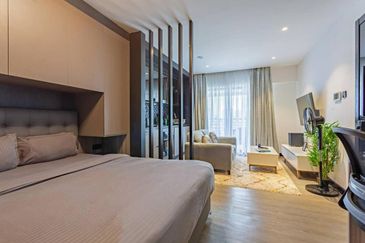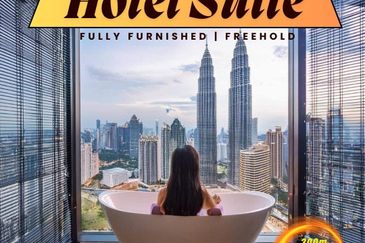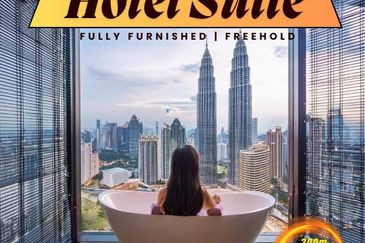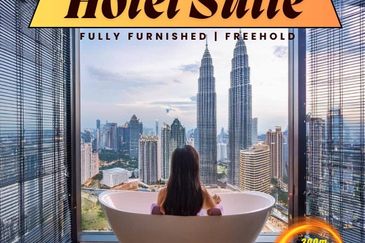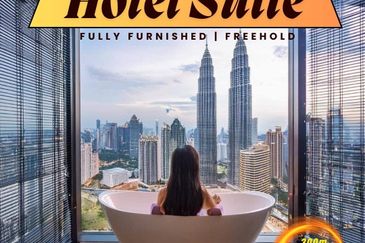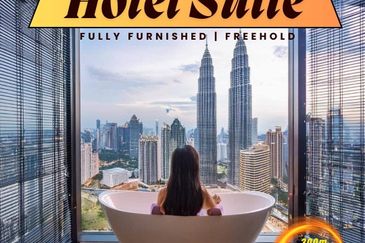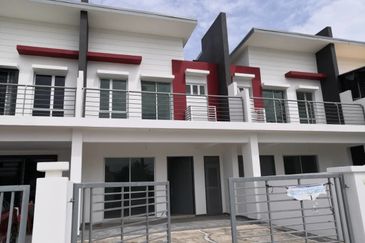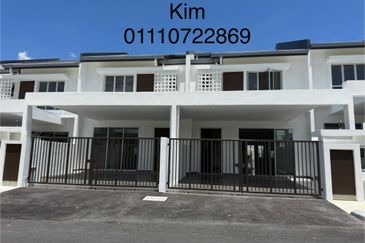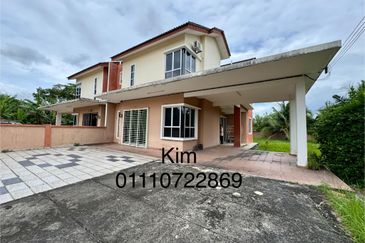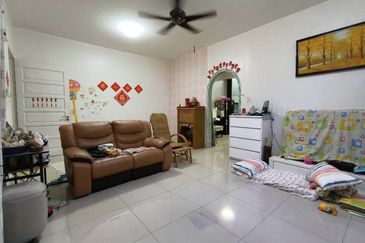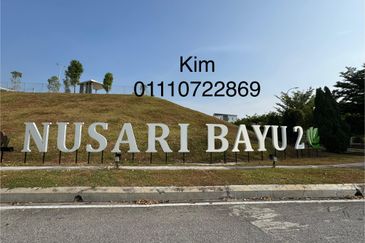
ALL the tiredness caused by a close-to-nine-hour plane journey and 20-minute car ride from the airport quickly vanishes at the sight of IGB Corp Bhd’s newest business hotel — The Tank Stream — in Sydney. As expected, the hotel has everything a business traveller would hope for.
“I understand what is important for a business traveller in a hotel room. The Tank Stream guest rooms are compact yet offer everything, such as high-quality toiletries, high-speed WiFi, beverage and tea bags and even a coffee machine,” says Tank Stream Holdings Pty Ltd managing director Tan Boon Lee.
Officially launched on Nov 4, the hotel, which comes under the St Giles Premier Hotel banner, was developed and is operated by Tank Stream Holdings, a subsidiary of IGB Corp.
The 16-floor hotel comprises 280 twin, queen, and king rooms. Every room comes with high-quality natural detailing, luxury, hypoallergenic pillows and quilts, as well as natural latex mattresses with latex toppers to ensure the guests get restful sleep. After all, Tan understands how important good sleep is to frequent travellers.
“We may have slightly smaller rooms and fewer facilities than the other hotels but we provide what a business traveller really needs without any extra charge, except for laundry services. We preferred to invest in something our target customers would look for when staying with us,” he explains. “The lack of facilities marked us down to three stars but with our room furnishings, services provided and location, we should be ranked four stars.”
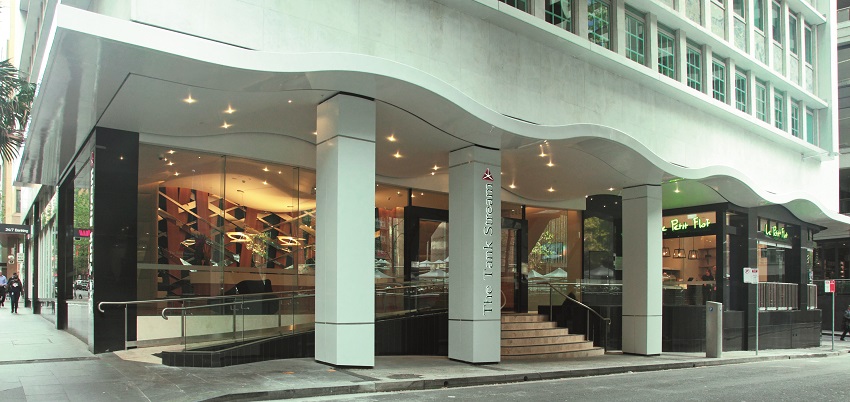
The rooms are from 15 to 25 sq m (161 to 270 sq ft) in size and the rates — ranging from A$280 to A$360 per night — vary depending on occupancy.
The hotel is strategically located in the corner of Pitt and Hunter streets in the financial district of Sydney. The closest railway station is Wynyard Station, which provides a 20-minute transfer from Sydney Airport. Other railway stations in close proximity are Martin Place and Circular Quay.
Additionally, Sydney’s popular shops, restaurants, bars and places of interest are nearby. In fact, Sydney Opera House, Queen Victoria Building and Australia Square are within walking distance.
Since The Tank Stream was soft-launched in July, its occupancy has averaged 50%. “We have seen good occupancy since the soft opening. People like the concept we offer and the response so far has been positive,” says director of rooms and marketing Ezio Russa.
Tan hopes the hotel will achieve an average occupany rate of 85% within a year of operations. “The Sydney hotel market has been strong and last year, it saw close to 85% [average occupancy]. We are targeting [85%] next year and we believe the market will be even stronger than this year,” he says, adding that for the time being, IGB does not plan another hotel in Australia.
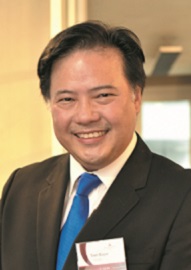
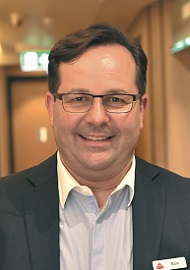


Preserving history
The Tank Stream hotel was previously a 12-storey office block built 52 years ago. It was purchased by IGB Corp from Charter Hall Group in 2011 for A$36 million. In 2012, the City of Sydney granted the developer approval to convert the building into a hotel and to add four floors.
The hotel’s name is linked to the history of the city. Sydney, Australia’s first settlement, began as a small village around the foreshores of a cove, now called Circular Quay. The settlement was sited there because a freshwater stream ran parallel to Pitt Street and alongside where The Tank Stream is located and flowed into the cove. The stream provided the colony with water in its early years and during a drought in 1790, storage tanks were built into the bedrock of the stream, giving it its name.
The Tank Stream ceased being used for drinking water in 1826 and was gradually enclosed with oviform drains of sandstone or brick in 1860. Today, it is a part of Sydney’s underground drainage system.
As a result of The Tank Stream hotel’s historical background and the many high-end peers in the vicinity, the developer realised it had to do something different to stand out from the crowd. IGB Corp design director John Bailey decided to give the hotel a cosy, personal and relaxed ambience. He did this by incorporating design elements like curved walls to provide a softer feel and a warm colour palette accented with lighting to give the hotel a welcoming atmosphere.
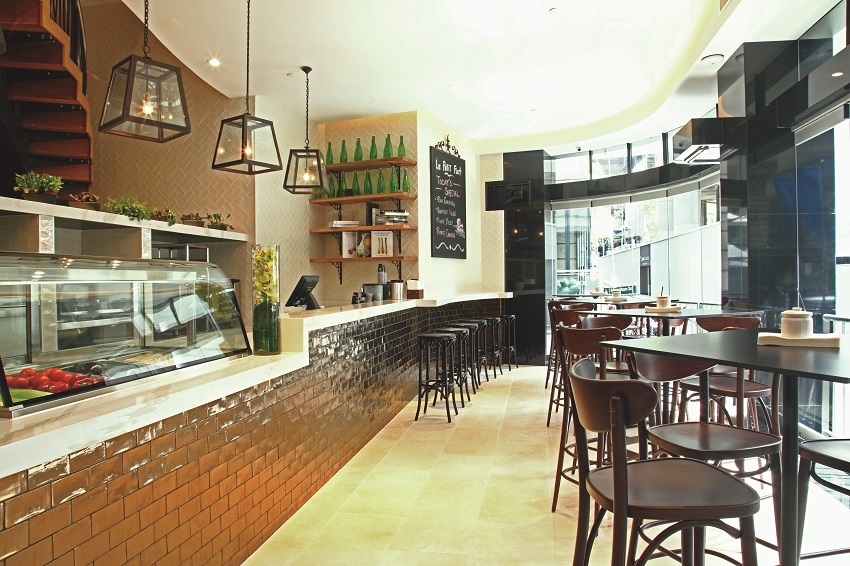
“In designing the hotel, it was important to us that we respected the existing building which, with its gridded façade embellished with Wombeyan stone, was a beautiful example of post-war international style,” Bailey says. “When the team built the additional four storeys, we were careful to respect the original building but at the same time, we wanted to build something that was more contemporary.”
He reveals that to incorporate the contemporary design into the building, opaque glass had to be used to maximise the light entering the rooms and also to ensure privacy.
The biggest challenge for the designer was the conversion of the interior of the hotel rooms. “We had to utilise a space that was originally designed for commercial use in a manner that was suitable for a hotel. Once we knew what kind of hotel we wanted, everything flowed from there. The way we set out our space and furnished our interior had one singular purpose — develop a hotel that was warm, bright and welcoming,” Bailey explains.
Moreover, the smaller space “made us be a little smarter with the design. Everything had to fit perfectly with no waste of space and yet be comfortable and friendly to the end user. We also worked to maximise the light coming through, even playing with the positioning of mirrors to help each room look a little bigger”, he says.
Bright future for hotel market
While Sydney expects to see an additional 3,000 hotel rooms to be added over the next five years, consultants still say there is a need for more hotel rooms.
“The long-awaited addition to room supply in the Sydney city market is much needed as demand has continued to rise and the lack of any notable new supply in the last five years has created pent-up demand. In fact, there have been minimal new supply additions to the market since the 2000 Olympics. Thus, the 3,000 rooms likely to be added will only go part of the way to satisfy the pent-up demand in the market,” says Knight Frank Australia Pty Ltd head of research Matt Whitby.
Adds Knight Frank Australia director of valuations, hotels and leisure Alistair Bell, “Sydney’s hotels are currently nearing capacity several nights a week. Therefore, the existing room supply is not considered sufficient to meet projected demand.”
He says occupancy at Sydney’s hotels rose through the year to 85% as at end-October, up from 83% a year ago and 81% two years ago. This was accompanied by an average room rate growth of around 6% as the market responded to improving demand.
“Consequently, the Sydney hotel market experienced an increase in room yield/revenue per available room of some 8% through the year to end-October,” Bell observes.
Whitby adds that as measured by independent researcher IPD-MSCI, Sydney’s hotels outperformed all others in Australia over the past year with total returns well above 15%; the strongest performance was in the five-star segment.
Consultants anticipate Sydney’s room night demand to rise and the development of new hotel capacity to remain somewhat challenged due to the differential between development cost and value on completion. They expect appetite for hotel assets to strengthen, headed by Asian high net worth individuals, operators and institutional investors.
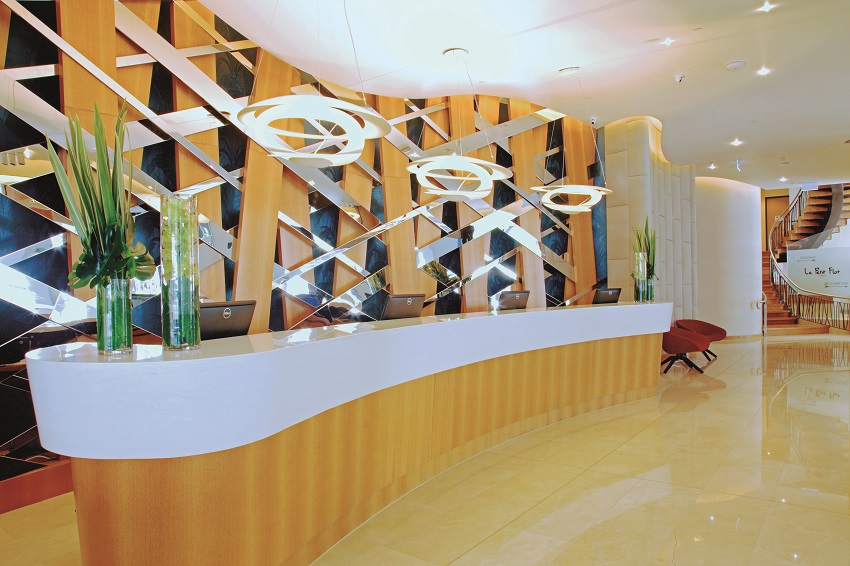
“Over the last year, significant sales have included the Westin Hotel to Singapore’s Far East Organization and Hong Kong’s Sino Land; Hilton Hotel to China-based Singapore investment house Bright Ruby; and the Sheraton on the Park to Sunshine Insurance Group of China,” Whitby says.
Recent analysis compiled by Knight Frank Research on the ownership of four and five-star hotels between January 2010 and end-September 2015 in the Sydney city centre shows that Asian ownership increased 77% to 8,363 rooms from 51% previously.
“Greater China has increased from effectively zero to almost 2,000 rooms or 18.4%, the majority of which occurred over the past two years. Malaysian ownership has increased from 1,254 rooms to 1,932 rooms or 18% with the likes of MKH Bhd, Low Yat Group, Galileo Malaysia, Starhill REIT and Mulpha International Bhd becoming current owners of major hotels in the Sydney city centre,” Whitby points out.
Hotel expansion
Currently, the St Giles Premier Hotel brand is present in London, New York, Manila, Kuala Lumpur and Penang. According to Tan, the brand will continue to expand.
“We wish to be in cities that everybody wants to visit … timeless destinations such as Paris and Singapore,” he says. “My wish [for another hotel] is Tokyo. We are actively looking at Tokyo now; however, we are focusing on the Bangkok one now. That should be our next hotel.”
Tan declines to give details about the Bangkok hotel but does reveal that it will be a mixed-use development with retail, office, shopping mall and hotel components.
“One thing is for sure [about the development], it is strategically located. Location has always been our strategy. If you look closely at the locations of the St Giles hotels, you will find that we are always right in the heart of the city, such as the 39th Street in New York, the Bedford Avenue in London and Pitt Street in Sydney,” he says. “You can never go wrong with location.”
This article first appeared in City & Country, a pullout of The Edge Malaysia Weekly, on Dec 14, 2015. Subscribe here for your personal copy.
TOP PICKS BY EDGEPROP
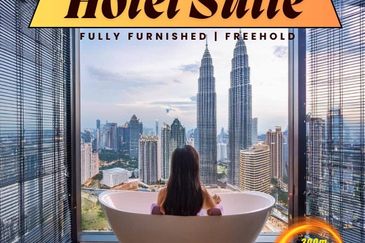
Jewel by Oxley KLCC
Kuala Lumpur, Kuala Lumpur

